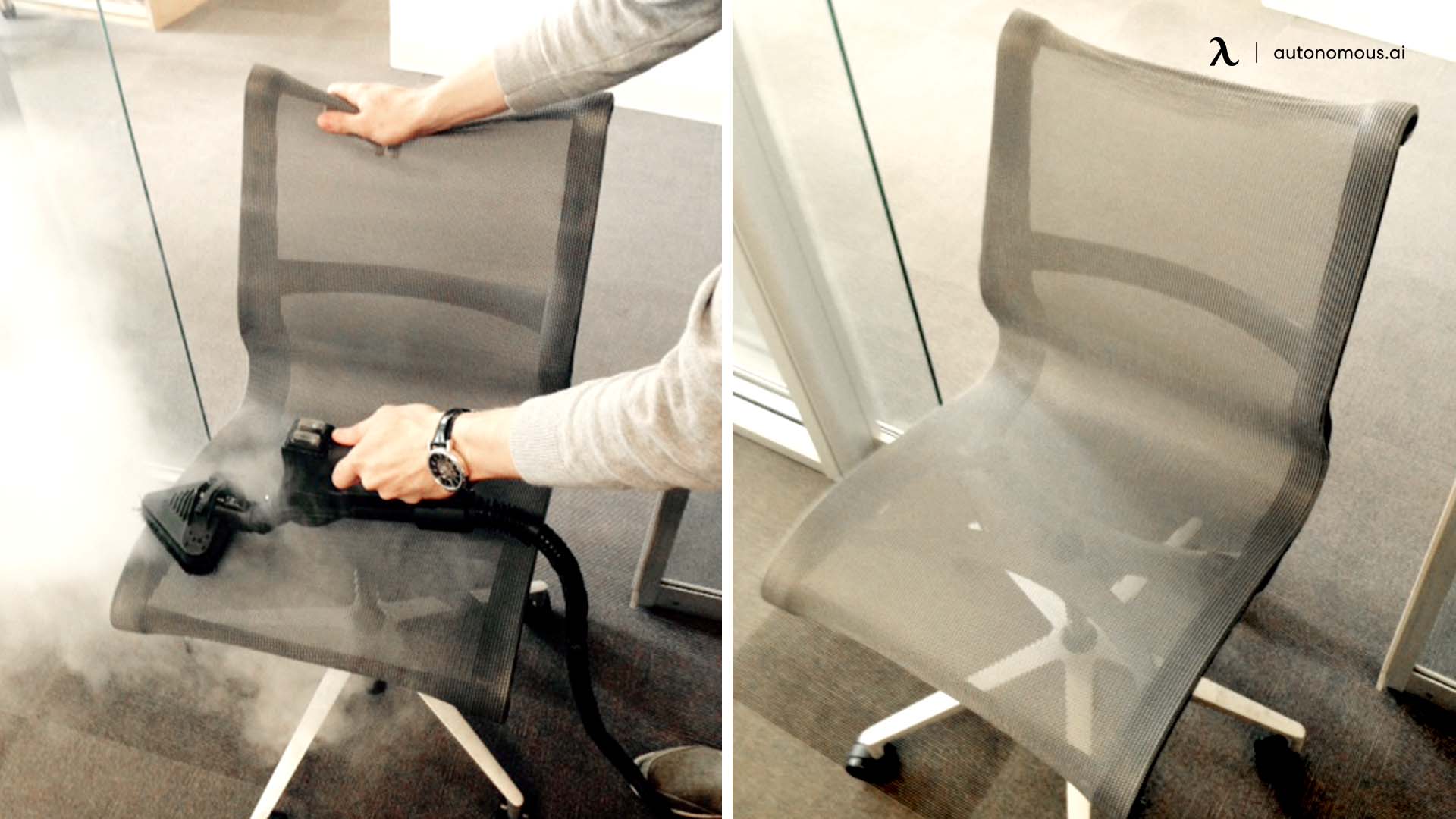Addressing Specific Stains and Dirt

Cleaning a desk chair effectively requires addressing various types of stains and dirt, from everyday spills to stubborn grime. The approach will depend heavily on the chair’s material, so always check the manufacturer’s cleaning instructions first. This section details methods for tackling common issues.
Ink Stain Removal
Ink stains are a common office mishap. For ballpoint ink, blotting the stain immediately with a clean cloth is crucial to prevent it from setting. Then, gently dab with rubbing alcohol, testing an inconspicuous area first. For felt-tip pen ink, isopropyl alcohol (70%) may also be effective. Always blot, don’t rub, to avoid spreading the stain.
Caution: Always test any cleaning solution on a hidden area of the chair fabric first to ensure it doesn’t cause discoloration or damage. Avoid using harsh chemicals or abrasive cleaners.
Coffee and Food Spill Removal
Coffee and food spills require immediate action. Blot up excess liquid with a clean cloth or paper towel. For water-based spills, a mild detergent solution (a teaspoon of mild dish soap in a cup of warm water) can be gently applied and blotted. For oily food spills, consider using a dry-cleaning solvent, again testing it in an inconspicuous area first.
Caution: Avoid scrubbing aggressively, as this can damage the fabric or leather. Allow the area to air dry completely before using the chair.
Pet Hair and Dust Removal
Pet hair and dust accumulate on chair surfaces, affecting their appearance and hygiene. Vacuuming with a soft brush attachment is effective on most materials. A lint roller is useful for smaller areas or delicate fabrics. A stiff-bristled brush can help remove embedded dust and hair from fabrics like upholstery.
| Method | Fabric | Leather | Mesh |
|---|---|---|---|
| Vacuuming | Highly Effective | Moderately Effective | Effective |
| Brushing | Moderately Effective | Less Effective | Not Recommended |
| Lint Roller | Effective | Moderately Effective | Less Effective |
Stubborn Grime and Sticky Residue Removal, How to clean a desk chair
Stubborn grime and sticky residue often require more intensive cleaning. A mixture of warm water and mild dish soap is usually a good starting point. Apply the solution to a microfiber cloth and gently wipe the affected area. For tougher residues, a magic eraser (melamine foam) can be effective, but use it cautiously to avoid scratching the surface. A close-up of a microfiber cloth gently wiping a sticky surface reveals the careful, controlled motion necessary to remove the residue without causing damage.
Disinfection of Desk Chairs
Disinfecting your desk chair eliminates germs and bacteria, improving hygiene. Several disinfectants are effective, including diluted bleach solutions (follow product instructions carefully), alcohol-based wipes, and commercially available disinfecting sprays. Always follow the manufacturer’s instructions on dilution and application.
- Diluted bleach solution (1 part bleach to 10 parts water)
- Isopropyl alcohol (70%)
- Commercial disinfecting sprays
Caution: Always test any disinfectant on a hidden area first. Ensure adequate ventilation when using strong chemicals. Never mix bleach with ammonia or other cleaning agents.
Maintaining and Extending Desk Chair Lifespan: How To Clean A Desk Chair

Proper maintenance significantly extends the life of your desk chair, ensuring comfort and functionality for years to come. Regular cleaning, as detailed previously, is only one aspect of this crucial process. Proactive care prevents damage and maintains the chair’s structural integrity, saving you money and ensuring a consistently pleasant workspace.
Regular Maintenance Checklist
A schedule of regular maintenance tasks helps prevent significant problems before they arise. Consistency is key to preserving the chair’s condition and extending its useful life. The following table Artikels a suggested maintenance schedule.
| Frequency | Task |
|---|---|
| Daily | Straighten cushions and adjust the chair to ensure proper posture. Briefly wipe down any spills or visible dirt. |
| Weekly | Vacuum or brush the chair to remove dust and debris. Check for loose screws or other signs of wear and tear. |
| Monthly | Perform a more thorough cleaning, including spot cleaning stains and treating any minor damage. Lubricate moving parts, such as the tilt mechanism, according to manufacturer instructions. |
| Yearly | Conduct a comprehensive inspection for significant wear and tear. Replace worn parts as needed. Consider professional cleaning or repair if necessary. |
Protecting the Desk Chair from Damage
Protecting your desk chair from stains and damage involves preventative measures. This proactive approach reduces the need for extensive cleaning and repairs.
Protective covers offer a barrier against spills, dirt, and wear. Several types are available: elasticated covers provide a snug fit, while loose covers offer more breathability. Waterproof covers are ideal for areas prone to spills, while fabric covers offer aesthetic appeal and protection from everyday wear. Using a chair mat under the chair protects the floor and prevents the chair’s base from scratching or damaging the flooring.
Proper Storage of a Desk Chair
Storing a desk chair correctly when not in use prevents dust accumulation and potential damage. Following these steps ensures the chair remains in optimal condition during periods of inactivity.
- Clean the chair thoroughly before storage to remove any dirt or debris that could attract pests or cause staining.
- If possible, disassemble the chair according to the manufacturer’s instructions. This makes storage easier and reduces the risk of damage.
- Wrap the chair in a protective cover, such as a dust cover or a large plastic bag. This will prevent dust and moisture from accumulating.
- Store the chair in a cool, dry place away from direct sunlight and extreme temperatures. Avoid damp areas that could encourage mold growth.
- If storing the chair for an extended period, consider using a breathable cover to prevent moisture buildup. Check on the chair periodically to ensure it remains in good condition.
